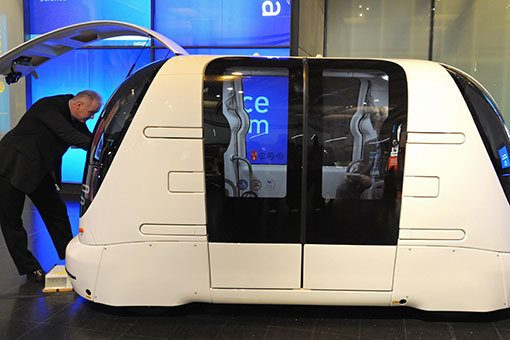Driverless cars break market
Google’s fleet of driverless cars has covered 300,000 miles – the equivalent of 12 times around the globe. Showing that autonomous vehicles can be safer than humans, they have only suffered one accident. And that was while a human was controlling the car

Although the cars operate automatically, they have previously required two operators to travel in the car and take control when needed, which they do by pressing the breaks or turning the wheel. The cars use video cameras, radar sensors, and laser range finders to detect other traffic and react to vehicles around them. Google cars are being trialled in Nevada, both on test tracks and public roads.
The recent achievement of the 300,000 milestone has seen Google grow increasingly confident in the safety of the complicated algorithms that run the driverless vehicles, and they have announced that the cars will soon start to be used by single operators for things such as their morning commute. During all those driverless miles there has only been one crash; a five-car-accident near to the California-based Google headquarters. Luckily for Google’s driverless car project, the accident was whilst the car was under human control. Road collisions are caused by human error on 90 percent of occasions, and autonomous cars may, in the future, completely remove the risk of traffic accidents. Google is now planning to further develop the systems to handle tricky road conditions such as ice and construction work.
Last year, Google lobbied in Nevada for bills that would make driverless vehicles legal on public roads, and were rewarded this May with the first US license for a driverless vehicle
Volvo has taken a less literal approach to the challenge of developing a driverless car system and has had recent success, as reported in the summer issue of The New Economy. The joint venture, named SARTRE (Safe Road Trains for the Environment) is a three year project launched in 2009 and funded by the European Commission. It brings together the efforts of Ricardo UK Ltd, Applus+ IDIADA, Tecnalia Research and Innovation, Institut für Kraftfahrzeuge Aachen, SP Technical Research Institute, Volvo Technology and Volvo Car Corporation.
The project aims to reduce congestion, environmental damage, and traffic accidents. A recent SARTRE trial saw a convoy of un-manned and wirelessly linked Volvo’s drive 125 miles along a Spanish motorway, following a lead car driven by a professional racing driver. Such a system isn’t entirely driverless and relies on the capabilities of the driver in the lead vehicle of the so-called “road train” to lead the rest of the “platoon” of cars, known as the slave vehicles. Up to eight vehicles can be used in the road train, allowing the drivers of the trailing cars to concentrate on other things, or to not be there at all. Such a system could essentially allow a lone truck driver to transport eight-times the amount of cargo as usual, in the same amount of time as their normal journey.
Physical safety issues may not be the only barrier for companies attempting to develop autonomous vehicles, as the developments in the technology are at risk of outpacing current legislation. Last year, Google lobbied in Nevada for bills that would make driverless vehicles legal on public roads, and were rewarded this May with the first US license for a driverless vehicle. Nevada is currently the only state to develop such regulations for driverless vehicles.
Its unclear how many miles will need to be completed in total, but the Google fleet may eventually clock enough miles to convince safety-conscious legislators around the world that they are a viable transport option.
Google and Volvo aren’t the only companies attempting to drive autonomous vehicle technology forward. General Motors intends to provide consumers with semi-autonomous vehicles by 2015 and fully autonomous vehicles by 2020. They are currently developing the EN-V (Electric Networked-Vehicle), a futuristic-looking autonomous vehicle. EN-V’s will communicate with each other in order to allow platooning similar to the Volvo road train, and will be able to come to the user when called by phone. Toyota has also entered the race, and is developing the AVOS – a car which can drive and park itself as well as return to its owner. BMW has similarly been working on an automated vehicle, which last year drove itself from Munich to Ingolstadt.
Mercedes-Benz unveiled their Dynamic & Intuitive Control Experience – DICE – earlier in the year. DICE is a gesture controlled social media, infotainment and navigational hub for use in the car. Although Mercedes’s DICE system is ready to use, they are waiting for driverless technology to catch up so that drivers can make use of its hands-free functionality.
Driverless technology may not yet be perfect, but the recent progress and confidence of the companies developing the products suggests we may see it by the end of the decade. This opens doors both for commuters who want an easier and safer route to work as well as companies wishing to transport more cargo for a fraction of the labour cost.













